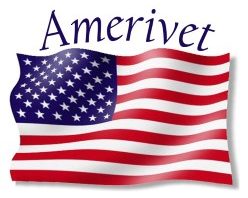Over the last month or so I’ve been thinking that my “Risk Management” series should have another entry. I have a lot to say about Risk Management, and most of it is good. This blog entry is about Risk Management, but it’s more about risking business assets and resources in hope of a payoff in the future.
Banks and government entities put a lot of faith in the durability of hard assets. They tend to ignore the fact that assets wear out over time, just like everything else. Probably the only thing that has a real durable value is land. Everything else is “consumable” and does get consumed by time, use, corrosion, bacteria, and a million other factors.
For instance, when you buy a screwdriver, it has a certain life expectancy if it just lays in your toolbox. If you use it once a month then the life expectancy is a little different, and if you use it eight hours a day, every day, then things are quite a bit different. Then how you use it makes a difference as well. If you use it for a pry bar or use it to change hose clamps on systems containing corrosive chemicals, then you can’t expect that screwdriver to be a lifelong companion.
That’s oversimplification, but I imagine you can understand how this applies to everything in business, from pencils to concrete. Everything gets consumed, no matter how durable it seems. Two factors slow this process down: Preventive maintenance, and timely repair. If you hesitate or skimp on either of those factors, then you’re increasing the risk that your assets will fail in a way that will impact your business.
I see this happen a lot. Preventive maintenance is expensive and time consuming. However, if it isn’t conducted in a reasonable manner then you’ll find out exactly how expensive a catastrophic failure during heavy production can be.
Back in the late 90’s I was tasked to take one of my best maintenance troops to the photo lab at Andersen AFB in Guam to “catch up” on their preventive maintenance because they had been over two years without a maintenance technician assigned to them. The had been no preventive maintenance and no repairs above the level a photographer could understand. We were given two weeks to bring the place up to speed, and the empty promise from the command was that they would assign a full time maintenance technician the following fiscal year.
When we arrived, the place was in shambles. Practically every piece of equipment was broken and most were completely out of commission. In other words, there were 30 people with jobs to do, and no equipment to do them with. Now get out your calculator and try to figure out what that lack of maintenance had been costing as this problem did nothing but grow for two years. The “Powers that Be” had taken a risk by not providing a means for maintenance and repairs, and failed miserably.
You can bet that Marc and I made a huge difference in the state of affairs over the next two weeks, but in those days it was very difficult to get parts and supplies to Guam quickly. We had to do the troubleshooting and teach the equipment operators how to install parts, and hope for the best. I’m sure the bleeding didn’t stop after we left as it was just impossible to get things right within the bounds that management had given.
Where this all ends up, is that it’s Management’s responsibility to mitigate risks by providing tools, equipment, safe work environment, and proper maintenance and other logistical support. As I’ve mentioned before, Risk Manangement is everyone’s job, and the people using that equipment need to communicate their needs, and be heard by management in a way that’s productive.
Amerivet Services has had many opportunities to provide a conduit between managment and the people getting the work done. We’ve introduced maintenace programs to many organizations, and helped to enhance the programs of many others. We help people across entire organizations understand the importance of preventive maintenance and timely repair, and we help managment find the fine lines between cost and effectiveness. Give us a call, and we’ll help your organization, no matter how big or how small!
For our parting shot, here’s a picture from the top of a billboard next to I-94 in Ann Arbor. I spent two days rebuilding the billboard frame. The years of standing next to a salty freeway had taken their toll!

